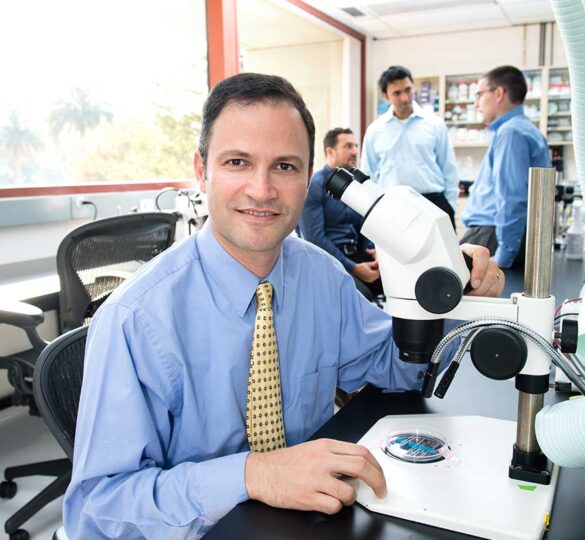Catalyst for a Cure: A Clear Path to Vision Restoration

For the first time, thanks to improvements in how we measure the disease, researchers are studying and testing new therapeutic candidates for neuroprotection, neuroenhancement, and visual restoration.
Currently, all therapy for glaucoma is directed at lowering eye pressure, but the fundamental problem in glaucoma is the degeneration of the optic nerve fibers necessary for vision.
Those optic nerve fibers are coming from cells in the retina, neurons called retinal ganglion cells. Glaucoma is a neurodegenerative disease, because the neurons responsible for vision are degenerating.
The Catalyst for a Cure (CFC2) Biomarkers team has been working to improve the way we measure the health of the retinal ganglion cells, to develop better methods of diagnosis and treatment.
The team was put together to study the biology of glaucoma, the neuroscience, what’s going wrong in this disease, what should we be measuring, and then invent new ways to measure it. In glaucoma, it’s important to measure the disease before it’s too late. When a visual field test detects impaired vision, that’s already late. We want to catch any signs of glaucoma much earlier than that.
Our group has innovated new methods to measure retinal ganglion cell subtypes in glaucoma patients. One method capitalizes on adaptive optics scanning laser ophthalmoscopy (AOSLO) specifically developed to provide extremely high-resolution images of the retina. Another leverages an optical coherence tomography (OCT) ophthalmoscope that uses visible light to image precise layers in the retina with unprecedented depth resolution and contrast.
We need glaucoma treatments that go beyond eye pressure and directly target the retina and optic nerve, the ganglion cells and their axon fibers carrying visual information to the brain. If we can intervene before nerve cells die, we have an opportunity to rescue and repair them. We’ve recruited glaucoma patients for our clinical trials, and we’re incorporating our new exploratory biomarkers to accelerate results.
For the first time, thanks to improvements in how we measure the disease, we are studying and testing new therapeutic candidates for neuroprotection, neuroenhancement, and visual restoration.
Article by Jeffrey L. Goldberg, MD, PhD.
Posted on January 2, 2019; Reviewed on April 19, 2022.

Jeffrey L. Goldberg, MD, PhD
Jeffrey L. Goldberg, MD, PhD is Professor and Chair of Ophthalmology at the Byers Eye Institute at Stanford University School of Medicine. Dr. Goldberg is a scientific advisor for the Catalyst for a Cure Vision Restoration Initiative, a collaborative research program developed by the Glaucoma Research Foundation.